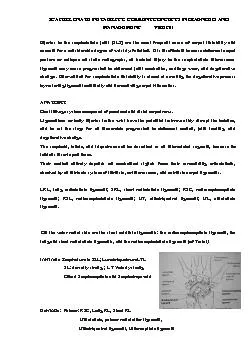

This oblique path of motion has been postulated to be uniquely human and is e angle Normal 30 to 60 degrees DISI x000070 degrees VISI 30 de ID: 826676
Download Pdf The PPT/PDF document "Dorsal intercarpal ..." is the property of its rightful owner. Permission is granted to download and print the materials on this web site for personal, non-commercial use only, and to display it on your personal computer provided you do not modify the materials and that you retain all copyright notices contained in the materials. By downloading content from our website, you accept the terms of this agreement.
Dorsal intercarpal
Dorsal intercarpal !Radioscapolunate liga(Testut): between LRL &SRL; is not a ligament as previously thought; NV pedicles. The most frequently injured of these intercarpal relationships is the SL
joint. The SLIL [scapholunate interosse
joint. The SLIL [scapholunate interosseous ligament] is C-shaped and attaches exclusively along the dorsal, proximal, and volar margins of the articulating surfaces, leaving a crevice between the bones distally. The 3 subregi
ons of the ligament have different mater
ons of the ligament have different material and anatomic properties, and the dorsal component is the thickest, strongest, and most critical of the SL stabilizers. The dorsal component is a true ligament with transversely orien
ted collagen Þbers, and is a primary res
ted collagen Þbers, and is a primary restraint not only to distraction, but also to torsional and translational moments. The palmar SL ligament, although considerably thinner, has important contributions to rotational stabilit
y of the SL joint. The proximal membrano
y of the SL joint. The proximal membranous portion of the SLIL appears histologically as a Þbrocartilaginous structure, and in isolation, contributes little to no restraint to abnormal motion of the SL joint. WRIST MECH
ANICS !!()*+,-$*"&.%&&%)",!!!!!!"#$%&'0
ANICS !!()*+,-$*"&.%&&%)",!!!!!!"#$%&'045!678!$*4!-)*$+,!978!!!!!!!!!!!!!!!!!!!!!!!!!!!!!!!!!!!!!!!!!!!!!!!!!This oblique path of motion has been postulated to be uniquely human and is e angle Normal 30 to 60 degrees
DISI �70 degree
DISI �70 degrees VISI 30 degrees 3. Cortical ring sign: PA radiograph when the scaphoid is abnormally ßexed, creating the so-called Òring sign-compartment arthrog
raphy).III: Complete separation demonst
raphy).III: Complete separation demonstrated from RC and MC and 1 mm probe can be passed between scaphoid and lunate IV: Same as III and 2.7 scope can be passed. Open repa
ir and capsulodesissupport the use of 1
ir and capsulodesissupport the use of 1 method over another to augment a direct repair of the SL ligament. Because SL instability represents a biplanar deformity, long-term results after combined ligament repairs with capsul
odesis procedures should be superior to
odesis procedures should be superior to results after using either technique in isolation.neurectomies to enhance pain relief. Proximal row carpectomy (PRC) is an option for patients with a relatively well-preserved
midcarpal joint. It is often combined wi
midcarpal joint. It is often combined with a limited radial styloidectomy. Osteoarthritis progression is a known complication because of the noncongruent articular surfaces of the capitate and distal radius. SLAC II